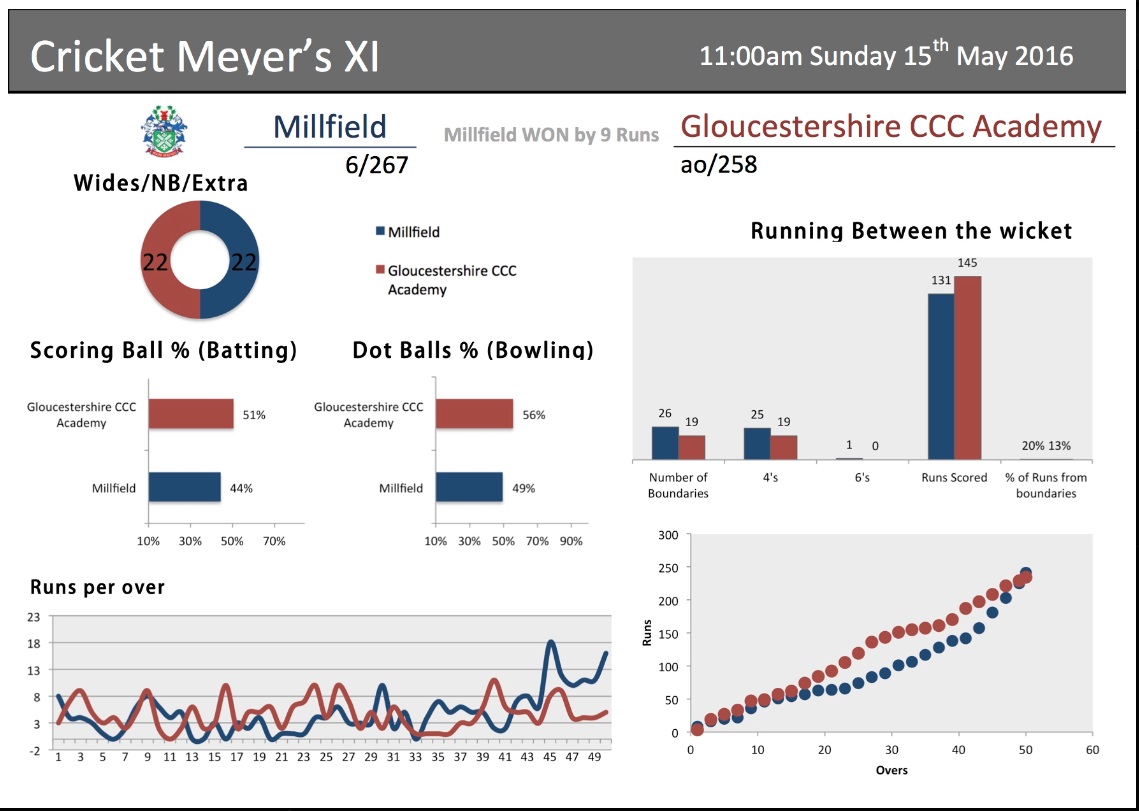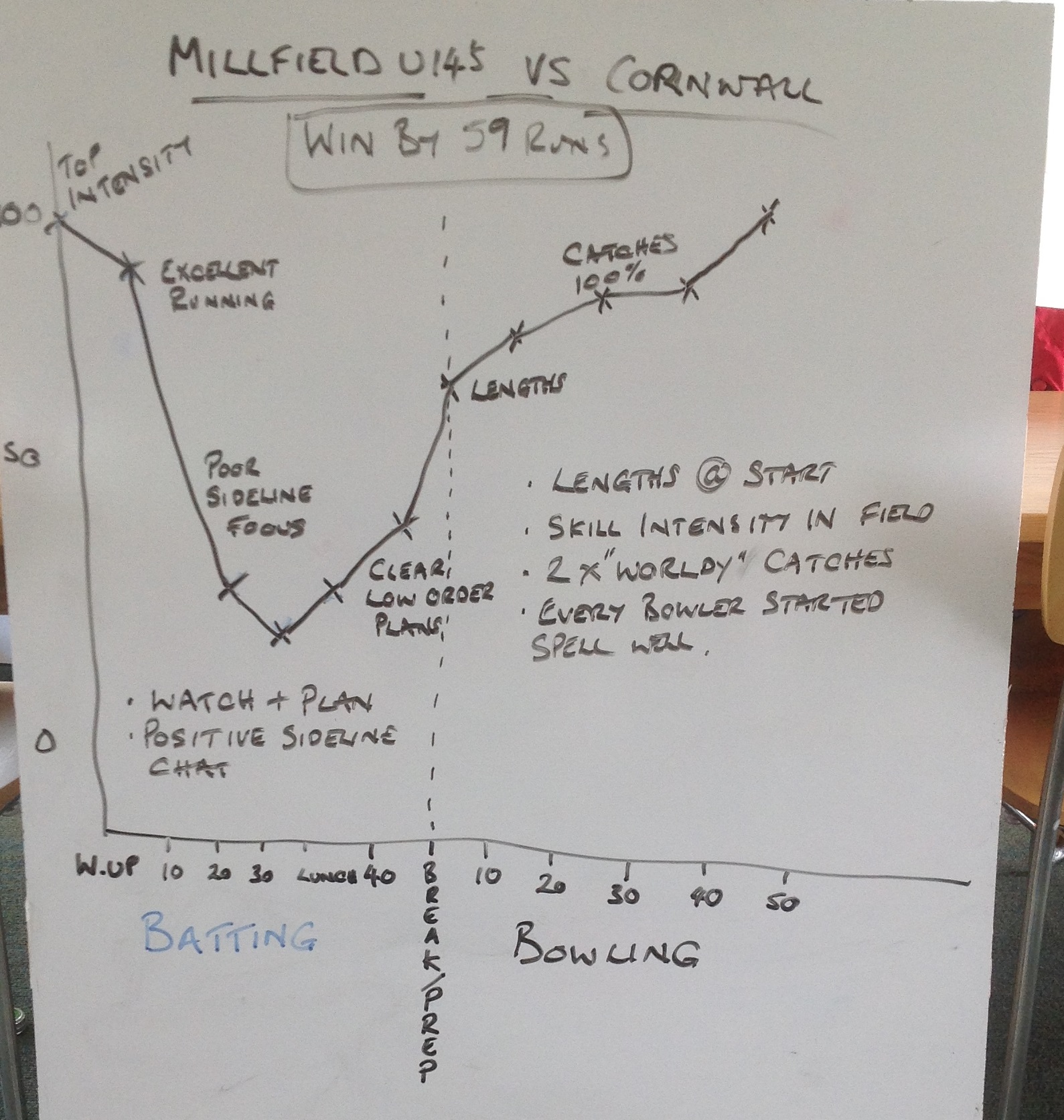|

I have become increasingly aware of different learning styles and preferences within teams over the years and have been trying to find different review methods that connect with those different styles.
Review is something that top quality teams and leading coaches do very well.
Every team is likely to have a combination of the following learning preferences:
- Verbal. The spoken word being the thing that these players connect with
- Visual. Video, pictures, infographics, mountainscape
- Auditory. Sounds or music
- Kinaesthetic. Acting things out or "shaping" shots, deliveries, throws and other skills/
Every player will have a leading learning preference and a secondary learning preference. If a coach can connect with different combinations of these stimuli over the course of a few reviews then every one of the players in your group would connect with key developmental points.
Verbal cricketers
Players with a verbal preference are always ok as I have yet to sit in a Silent review!
Now there is an idea to ponder!
Auditory cricketers
30% of the general population have a auditory preference.
Auditory players can connect better with key words or imagery if it is associated with music. I used to do this with the England players by finding out what their favourite songs were and combine the music with video and key coaching messages.
We had one player who took a defensive line to the ball when fielding so I built a fielding video which had a heap of top quality stops, run outs and catches in it.
The key coaching point that I wanted to get across (subtly) was to promote the line of attack from the world’s best deep fielders at the time (Hayden and Symonds). The video contained lots of fielders doing some great things. The music was Tiger Feet by T-Rex. The video would show both Aussies completing run outs or preventing extra runs during the chorus of the song.
At the next training session the player in question asked if we could work on running different lines to deep hit balls to test what angles were workable and which were not.
Job done!
Kinaesthetic cricketers
5% of the general population have a kinaesthetic preference.
Some players that I know have a kinaesthetic learning preference will take themselves into a space and simulate the reviewed point if technique or method is on the agenda during the review meeting.
One of the England Captains I worked with would listen to a discussion and then stand as if he was playing the bowler in question simulating his game plan there and then.
These types of players will learn from feeling the reviewed point rather than sitting in a chair nodding their heads.
Give these players scope to move around and simulate and the reviewed point. It then has more chance of landing.
Visual cricketers
65% of the general population have a visual preference.
The addition of video footage, stills taken at the game, some infographics displaying key developmental points are all brilliant for those players who have a visual learning preference. The information on the screen will be more easily by the visual learner.
Here is an infographic that we use at school with our teams that is taken from our Analysis software.

The information is no different to verbal information or tabled stats, just presented differently. Some players really connect with this approach.
A more subjective way of reviewing is through the Mountainscape approach.
The “Y-value” is a percentage based on performance at given points (1-100%).
The “X-value” is the timeline through the day which highlights 10 over segments and any breaks in the flow of the game (Lunch/Drinks/Tea).
Here is an example taken from a recent Millfield U14 game against Cornwall U14s.

We plot some crosses to show our level of performance at each point on the X-Axis. Then join the crosses up to create a mountainscape.
If there is a valley or a peak in the mountainscape then we will attribute what has led to the positive or negative performance shift.
The visual learners find this a great way of connecting to both the events from the game and the key learnings.
Have a go at tinkering with the different delivery styles in your review process and see your how that impacts on performance.
Discuss this article with other subscribers
|

.jpg)
.jpg)


.jpg)
.jpg)
